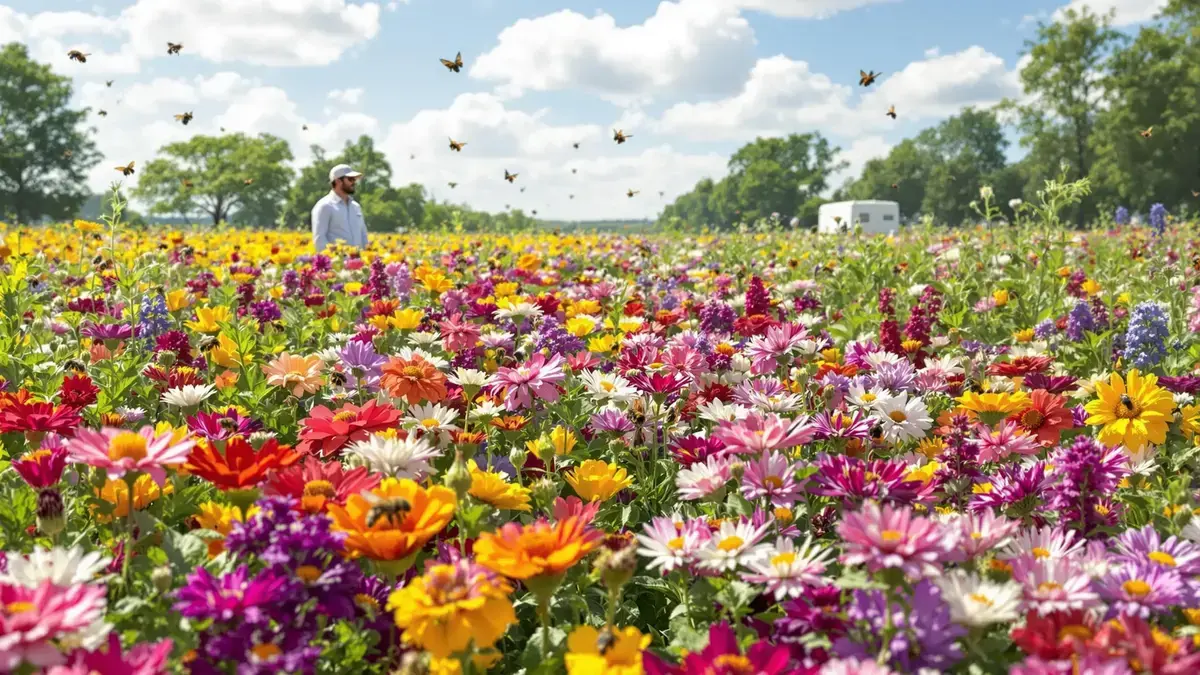A recent British study reveals that intensive use of fertilizers is seriously harming the biodiversity of pollinators, key elements of our agricultural ecosystem. According to the results, 25% of cultivated land is suffering from the negative effects of fertilization, leading to a 50% reduction in pollinators, which are essential for agricultural productivity. The Park Grass experiment, initiated in 1856, highlights the consequences of this practice, suggesting the need for a compromise between productivity and biodiversity.
The key information
- Intensive use of fertilizers harmful to the biodiversity of pollinators.
- A British study reveals a significant reduction in flowers and pollinators.
- The impact of fertilization observed on 25% of agricultural land, a decline in pollinating insects noted.
- Ecological strategies are necessary to balance agricultural productivity and biodiversity conservation.
Intensive fertilizer use and pollinator biodiversity
A new alarming study reveals that the increased use of fertilizers in agriculture exerts significant pressure on the diversity and abundance of pollinators. These insects, deemed essential for agricultural productivity, are facing unprecedented challenges, threatening not only their existence but also the health and sustainability of our ecosystem. Fertilizers, while used to boost yields, disrupt the delicate balance of natural habitats.
Effects of fertilizers on the agricultural ecosystem
The harmful effects of fertilizers on our agricultural ecosystem are concerning. A British study has shown a significant reduction in flowers and pollinators in fertilized areas. Indeed, about 25% of agricultural land is directly impacted by fertilizer use, causing a disruption in soil chemistry and a decrease in both plant and animal biodiversity.
Observation of pollinator scarcity
Results from a study named Park Grass, initiated in 1856, provide further insight into these issues. This research aimed to examine the long-term effects of fertilization on ecosystems. Over 1400 transects, a scarcity of 50% of pollinators was observed, indicating an alarming degradation of their populations. Data suggests that untreated plots could host up to 10 times more bees, highlighting the positive impact of farming less reliant on chemical inputs.
Interspecific competition and biodiversity
Fertilization also leads to interspecific competition among plant species, further complicating the situation. Species favored by fertilizers can outcompete those that are beneficial to pollinators, creating a less welcoming environment for them. The links between fertilizer content and pollinator diversity remain poorly quantified, and this gap needs to be addressed to better understand the underlying dynamics.
Ecological solutions to consider
In the face of these challenges, it becomes imperative to find a compromise between agricultural productivity and biodiversity conservation. Increasing pH through lime application, for instance, could mitigate some negative impacts of fertilizers. Moreover, ecological strategies appear to be a promising avenue for improving nutrient management. By adopting more sustainable farming methods, farmers can not only protect pollinators but also ensure the viability of food production for future generations.







